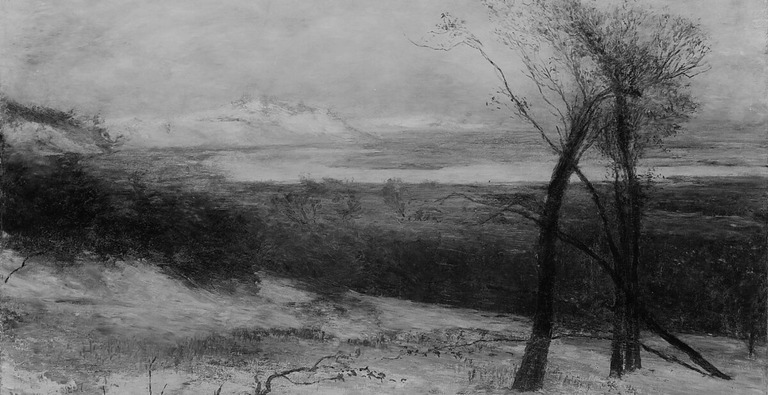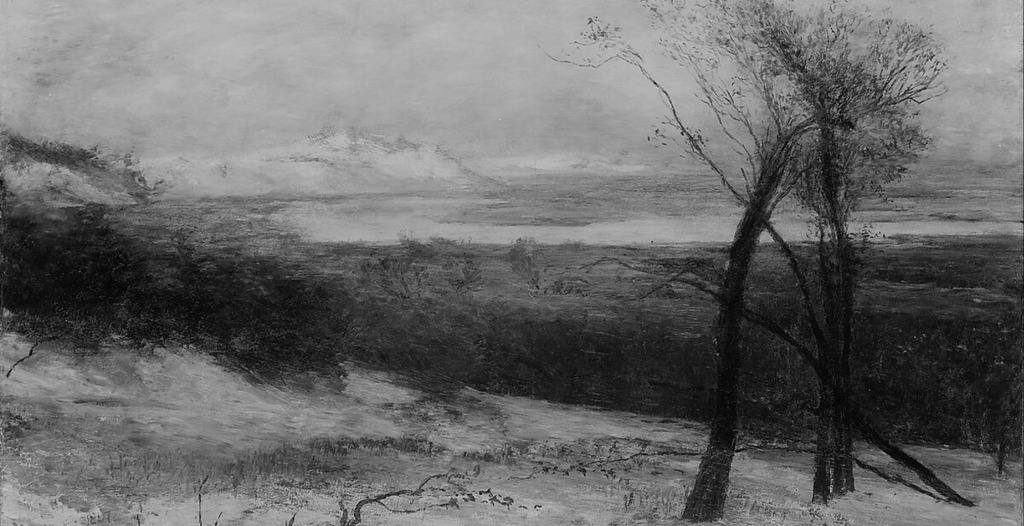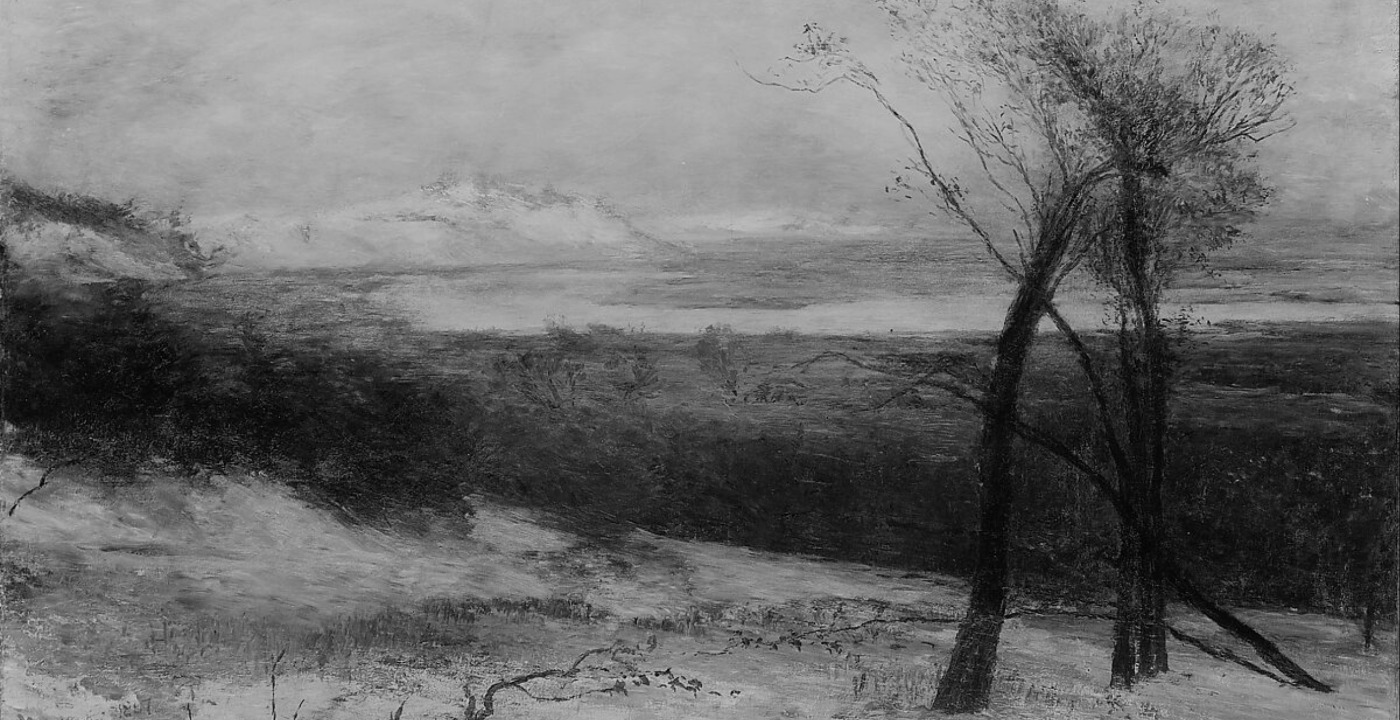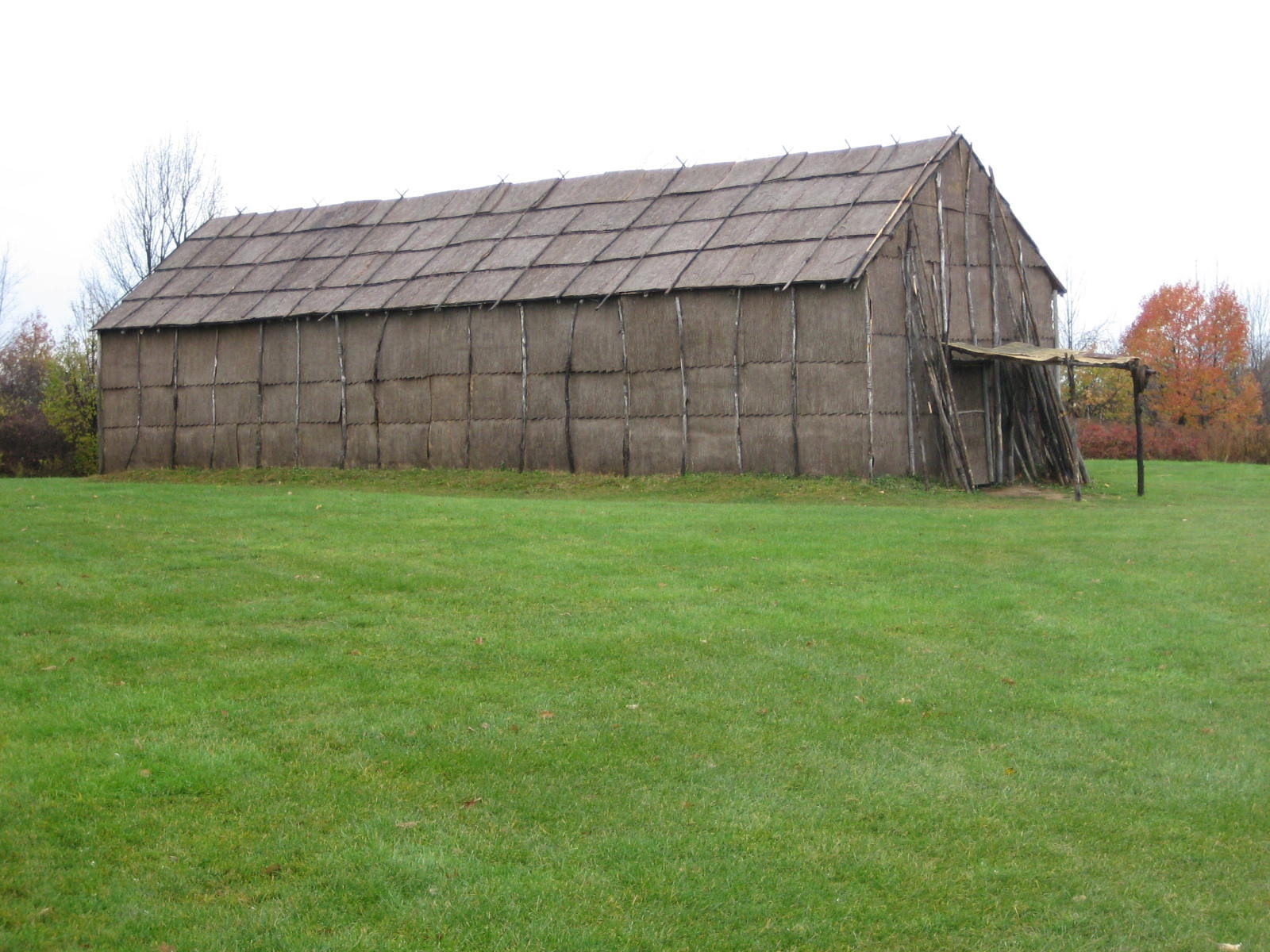Birth
17th century
Death
Unknown
Jigonsaseh (ruled 1687-1690) was an Iroquoian woman and leader within the Haudenosaunee League. When King Louis XIV’s war leader Marquis de Denonville misled, imprisoned, and enslaved a large group of Haudenosaunee government members under the guise of a “peace conference” in 1687, bringing them overseas to France, Jigonsaseh took matters into her own hands. She gathered the remaining chiefs and clan mothers and led an army against Denonville. She and her group of Haudenosaunee leaders successfully pushed Denonville out of their land, negotiated the hostages’ freedom, and reclaimed Seneca territory.
Personal Information
Name(s)
Jigonsaseh, Fire Woman of the Attiwendaronks, Kieuneka, Gaonogeh1
Date and place of birth
Born during the 17th century. Though Jigonsaseh’s place of birth is unknown, her title as “Fire Woman of the Attiwendaronks” may indicate that she was born on Attiwendaronk territory, which spanned from Southwestern Ontario to Western New York.
Family
Descendant of The Peace Queen (original Jigonsaseh)
Religion
While Jigonsaseh’s spiritual beliefs are unknown, Haudenosaunee communities have historically held ceremonial rituals that adhere to the seasons, such as the New Year Festival and the Maple Dance.2 Further, the 1687-1690 Jigonasesh (like the title-originator) was presumably exposed to the Iroquois creation story, which describes a Sky Woman falling into water and landing on a turtle, forming Turtle Island. Other animals assisted in the creation, such as a Beaver who softened the impact by bringing soil as a cushion. The Sky Woman had two sons, one responsible for good in the world, the other for evil.3
Transformation(s)
A transformative event in Jigonsaseh’s life occurred in 1687 when Jacques René de Brisay (or the Marquis de Denonville) intended to blockade Seneca land on behalf of King Louis XIV of France. Then known as the female ruler of the Attiwendaronks, she assumed the unoccupied role of Jigonsaseh amid turmoil. The role of Jigonsaseh originated in the 12th or 13th century, by a pro-peace woman who helped form the Five Nations and the Great Law of Peace alongside The Peacemaker and Hiawatha.4 Denonville led an army of 3,000, exceeding all preceding military formations on North American soil.5 Though the role was not initially intended to oversee military operations, the 17th-century Jigonsaseh adopted the military leader role while simultaneously supervising cultural affairs, leading her army to victory against a revered French war leader.6 Not only did this decision prove transformative within the trajectory of Jigonsaseh’s life, but it also expanded upon the pre-existing legacy of the Jigonsaseh role within the Haudenosaunee Confederacy.7 The role of Jigonsaseh stemmed from the desire to maintain peace among the Five Nations. Amid attempts at violent colonization in the 17th century, the position’s legacy developed to include protection against outside sources who intended to eradicate Haudenosaunee culture altogether.
Contemporaneous Network(s)
Jigonsaseh held a leadership position within the neutral Attiwonderonk nation—the most sizable Indigenous group in the 17th-century Eastern Woodlands. This expansive network consisted of approximately 40,000 people.8 Spanning from southwestern Ontario to western New York, the Attiwonderonk people were well-respected among the Iroquois. Hence, the Haudenosaunee Confederacy was elated when the Fire Woman of the Attiwendaronks assumed the role of Jigonsaseh, further expanding her circle.9 Further, as a descendent of the original Jigonsaseh, she came from a long lineage of powerful women, an ancestral network that presumably inspired her valiant advocacy for and protection of the Haudenosaunee people.
When war erupted against the French, Jigonsaseh’s vast network of Haudenosaunee people proved crucial. Serving Peace Women recruited soldiers and became warriors, organized into an efficient army by Jigonsaseh. Amid great turmoil resulting from the imprisonment and enslavement of prominent leadership, Jigonsaseh rose to the occasion and led her network of Haundenosaunee people to victory.10
less
Significance
Works/Agency
Jigonsaseh (1687-1690) is politically and culturally known for defeating the French military. The crown’s attempt at destruction came in response to their reputation-shattering incapacity to overthrow the Haudenosaunee League. With decades of battlefield experience, Denonville was appointed to replace his unsuccessful predecessor, de la Barre.10 French Marine Minister Seignelay was confident in Denonville’s abilities, writing in a letter: “He is one of the most esteemed officers in the kingdom. His Majesty chose him as a man who by his virtue will work for the good of religion, by his valour and his experience will restore the affairs that M. de La Barre has virtually abandoned in the shameful peace that he made with the Iroquois.”11 Seignelay’s conviction, however, would later prove to be incorrect.
King Louis XIV encouraged Denonville to imprison and enslave Haudenosaunee people. Denonville schemed to seize fifty men, with others claiming 200, from the Grand Council by inviting them to a ‘peace conference’ at Fort Frontenac.12 Believing that Denonville’s intent was genuine, the pro-peace group of Haudenosaunee men attended, were instantly imprisoned, and transported to France as galley slaves.13 After dismantling the men’s Grand Council, the French were temporarily successful in pushing the Seneca from their homes. Disturbingly, The French burnt Seneca food reserves (allegedly around one million corn bushels), destroyed longhouses, robbed graves, and stole Wampum from the dead.14 Hailing from a patriarchal culture, Denonville overlooked/underestimated the power of The Clan Mothers’ Council.
The 1687 Jigonsaseh adopted the role of military leader, gathering the remaining Seneca refugees and forming an army. At first, the French outnumbered Jigonsaseh’s army of women and children—but she was not deterred. Their force eventually overthrew Denonville and his men with striking efficiency, counterattacking at Fort Niagara and overwhelming the once-confident French military. Even a single wing of the Haudenosaunee League’s military became challenging for the French to overthrow.15 The Haudenosaunee victory was emphasized when, on August 4th, 1689, Jigonsaseh and her army encircled the French settlement La Chine, causing chaos among the French inhabitants and serving as a fierce reminder of Haudenosaunee power. Threatened by Jigonsaseh’s impending entrance into Montreal, the French “sued for peace” to avoid surrender.16 Left humiliated by Jigonsaseh and her army, Denonville returned to France. Though only thirteen enslaved council members survived, Jigonsaseh demanded their return.
Reputation
Jigonsaseh’s reputation was varied due to diverging cultural understandings of gender and ethnicity. Among the Haudenosaunee people, women played significant roles within League leadership and decision-making. The Great Law of Peace, partially written by the title-originating Jigonsaseh, explicitly outlines the position of women in society: “Women shall be considered the progenitors of the Nation. They shall own the land and the soil. Men and women shall follow the status of the mother.”17 Hence, Jigonsaseh was greatly respected and given the power to assume control of operations after the imprisonment and enslavement of male Haudenosaunee Grand Council Members.
The French, who were sociopolitically male-dominated in the 17th century, underestimated both Jigonsaseh and the role of the Clan Mother’s Council (“Gantowisas,” or powerful women). Subsequently, they applied preconceived notions of gender to their military approach. Racist and Eurocentric stereotypes also affected the French view of the Haudenosaunee league, insultingly referring to them as “les sauvages.”18 Their flagrant assumptions proved to be their downfall. Denonville, who held members of the Male Council hostage, disregarding the power of the Clan Mothers altogether, was astonished and overwhelmed when a well-oiled army led by Jigonsaseh attacked. By leading her people to victory, Jigonsaseh altered her reputation among Europeans, who had scoffed at the potential of Iroquois resistance. Denonville came to regret this, allegedly “cowering at Montreal with his terrified wife,” according to Scholar Barbara A. Mann.19 Jigonsaseh had discovered a newfound reputation— one that caused even French Montreal colonizers to greet her (and her military) with presents.20
Legacy and Influence
Musical artist Stefania de Kenessey included Jigonsaseh (1687-1690) in her cantata “The Names of Woman,” which “recognizes six women from different eras and cultures who have been unjustly neglected by history.”21 Her work recalls the extraordinary yet under-represented story of Jigonsaseh. In part four of the cantata, de Kenessey describes the imprisonment of Iroquois leadership, Jigonsaseh’s rise to power, her defeat of the French military, and the shame that the French experienced as a result, “Trounced by a mere female.” Jigonsaseh’s section concludes valiantly: “Jigonsaseh! / Your power shall never, ever fade.”22
All existing Jigonsaseh historical markers are associated with the title-originator, who lived during the 12th or 13th century. However, a Historical Marker to the first Jigonsaseh (or Jikonhasesh) is located in Victor, New York, at Ganondagon State Park, where the future Jigonasesh inflicted notable retaliation against the Denonville Campaign.23 Historical markers signifying battle locations also exist in Upstate New York. However, they do not name Jigonsaseh directly, instead portraying events from the French military’s perspective. For instance, one marker is inscribed: “We set out...in battle array, expecting to find the enemy entrenched in the new village which is above the old. We entered the plain, however, without seeing anything but the vestiges of the fugitives. We found the old village burnt by the enemy, who had also deserted the intrenchment of the new which was about three-quarters of a league distant from the old. We encammped on the height of that plain.... Jacques Rene de Brisay/Marquis de Denonville/July 14, 1687.”24 Numerous markers exist in the area recounting the battles from a similarly Eurocentric perspective.
Gandondagan State Historic Site in Victor, NY, features a reconstructed 17th-century Seneca Longhouse originally destroyed by Denonville in 1687. The 1998 recreation makes tangible the customs and cultural context of Jigonsaseh’s life, featuring era-accurate replicas of furniture and trade goods.25
less
Controversies
Controversy
Since the title of ‘Jigonsaseh’ was passed down among generations of Haudenosaunee people, the 1687-1690 ruling Jigonsaseh has frequently been misidentified as the title-originator. Much of her life exists in the margins of historical academia, as a tidbit to exemplify the original Jigonsaseh’s legacy. Throughout centuries of Western scholarly error and lack of interest in women’s cultural history, Jigonsaseh has been misinterpreted as a single “name” instead of a “title,” falsely crediting the original Jigonsaseh with the accomplishments of future title-holders. Scholar Barbara Alice Mann addresses this consistent misnomer in her book, Iroquoian Women: The Gantisowas, writing, “Although much of women’s tradition has been lost, fragments of old Keepings that mention other Jigonsasehs pop up in later traditions” (Mann 134).26
less
Clusters & Search Terms
Current Identification(s)
Military strategy, cultural affairs, Indigenous leadership
Clusters
Female military leaders, Indigenous activists, Community leaders
Search Terms
Jigonsaseh, Haudenosaunee, Iroquois, 15th century, Seneca, Marquis de Denonville, military leader
less
Bibliography
Sources
Footnotes:
1Barbara Alice Mann, Iroquoian Women: The Gantowisas (New York, New York: P. Lang, 2006).
2Native Hope, “The History and Culture of the Iroquois,” Native Hope Blog, August 9, 2023, https://blog.nativehope.org/the-history-and-culture-of-the-iroquois.
3Karen Coody Cooper. 2022. Cherokee Women in Charge : Female Power and Leadership in American Indian Nations of Eastern North America. Jefferson, North Carolina: McFarland.
4Barbara Alice Mann, Iroquoian Women: The Gantowisas (New York, New York: P. Lang, 2006).
5Peter Pappas, “Invaders Came from the North,” Upstate Magazine, July 12, 1987. https://www.peterpappas.com/journals/denonville.pdf
6David Wengrow and David Graeber, The Dawn of Everything (New York, NY: Farrar, Straus and Giroux, 2021), 483.
7Ibid.
8“Land Acknowledgement,” Southwest Ontario Tourism Corporation, https://www.ontariossouthwest.com/land-acknowledgement/.
9Barbara Alice Mann, Iroquoian Women: The Gantowisas (New York, New York: P. Lang, 2006).
10Barbara Alice Mann, Iroquoian Women: The Gantowisas (New York, New York: P. Lang, 2006).
11W. J. Eccles, “BRISAY DE DENONVILLE, JACQUES-RENÉ DE, Marquis de DENONVILLE,” in Dictionary of Canadian Biography, vol. 2, University of Toronto/Université Laval, 2003–, accessed April 1, 2025, https://www.biographi.ca/en/bio/brisay_de_denonville_jacques_rene_de_2E.html.
12David Wengrow and David Graeber, The Dawn of Everything (New York, NY: Farrar, Straus and Giroux, 2021).
13Barbara Alice Mann, Iroquoian Women: The Gantowisas (New York, New York: P. Lang, 2006).
14Susan M. Hill, The Clay We Are Made of: Haudenosaunee Land Tenure on the Grand River (Winnipeg: University of Manitoba Press, 2017).
15W. J. Eccles, “BRISAY DE DENONVILLE, JACQUES-RENÉ DE, Marquis de DENONVILLE,” in Dictionary of Canadian Biography, vol. 2, University of Toronto/Université Laval, 2003–, accessed April 1, 2025, https://www.biographi.ca/en/bio/brisay_de_denonville_jacques_rene_de_2E.html.
16David Wengrow and David Graeber, The Dawn of Everything (New York, NY: Farrar, Straus and Giroux, 2021).
17Jodi Belford and Joe Russell, The Haudenosaunee (Iroquois) Great Law of Peace: A Precursor to the United States Constitution (National History Day), https://nhd.org/wp-content/uploads/2023/04/10-IndigenousGovernance.pdf.
18Barbara Alice Mann, Iroquoian Women: The Gantowisas (New York, New York: P. Lang, 2006).
19Ibid.
20Ibid.
21https://docs.google.com/document/d/1iVdoUa2BVKKItywQKHzstj16FgaxJGQnNKmcmcGR4fg/edit?tab=t.0
22IBID.
23https://www.hmdb.org/m.asp?m=68618
24https://www.hmdb.org/m.asp?m=126386
25“Bark Longhouse.” Ganondagan State Historic Site https://www.ganondagan.org/bark-longhouse.
26Barbara Alice Mann, Iroquoian Women: The Gantowisas (New York, New York: P. Lang, 2006).
Secondary:
Karen Coody Cooper. 2022. Cherokee Women in Charge : Female Power and Leadership in American Indian Nations of Eastern North America. Jefferson, North Carolina: McFarland. https://research-ebsco-com.libproxy.newschool.edu/linkprocessor/plink?id =06736869-881c-3356-be2f-93db55f8589b.
Eccles, W. J. “BRISAY DE DENONVILLE, JACQUES-RENÉ DE, Marquis de DENONVILLE,” in Dictionary of Canadian Biography, vol. 2. University of Toronto/Université Laval, 2003.
https://www.biographi.ca/en/bio/brisay_de_denonville_jacques_rene_de_2E.html.
Hill, Susan M. The clay we are made of: Haudenosaunee land tenure on the Grand River. Winnipeg: University of Manitoba Press, 2017.
Mann, Barbara A., and Jerry L. Fields. “ A Sign in the Sky: Dating the League of the Haudenosaunee.” American Indian Culture and Research Journal, 1997. https://escholarship.org/content/qt27g1b5px/qt27g1b5px.pdf.
Mann, Barbara Alice. Iroquoian women: The Gantowisas. New York, New York: P. Lang, 2006.
Mann, Barbara A. “The Lynx in Time: Haudenosaunee Women’s Traditions and History.” American Indian Quarterly 21, no. 3 (1997): 423–49. https://doi.org/10.2307/1185516.
Wengrow, David, and David Graeber. The Dawn of Everything. New York, NY: Farrar, Straus and Giroux, 2021.
Archival Resources (selected):
Belford, Jodi, and Joe Russell. The Haudenosaunee (Iroquois) Great Law of Peace: A Precursor to the United States Constitution. National History Day, https://nhd.org/wp-content/uploads/2023/04/10-IndigenousGovernance.pdf.
Web Resources (selected):
“Bark Longhouse.” Ganondagan State Historic Site https://www.ganondagan.org/bark-longhouse.
“Land Acknowledgement.” Southwest Ontario Tourism Corporation. https://www.ontariossouthwest.com/land-acknowledgement/.
Native Hope. “The History and Culture of the Iroquois.” Native Hope Blog, August 9, 2023. https://blog.nativehope.org/the-history-and-culture-of-the-iroquois.
Pappas, Peter. “Invaders Came from the North.” Upstate Magazine, July 12, 1987. https://www.peterpappas.com/journals/denonville.pdf




Comment
Your message was sent successfully